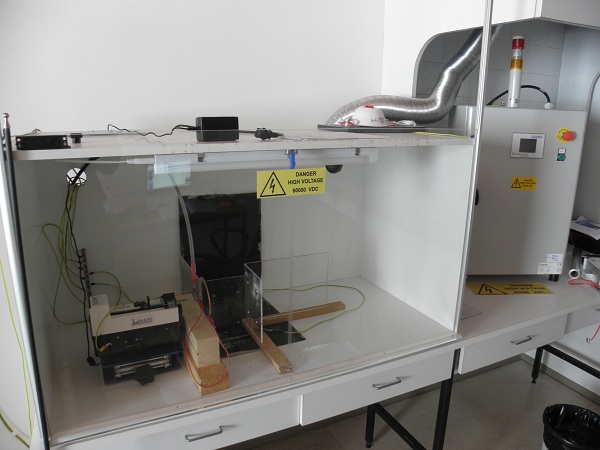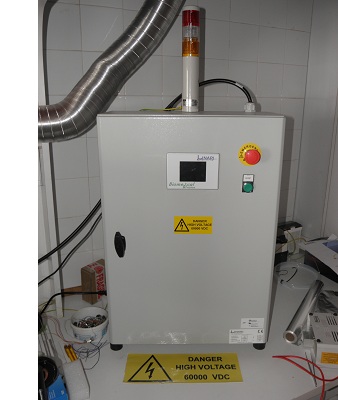equipment - Electrospinner
Due to a high voltage electric field, the electrical forces at the surface of a polymer solution or melt overcome the surface tension and cause an electrically charged jet to be ejected. After evaporation of the solvent, thin and continuous fibers that reach diameters of the order of nanometers and that consist of highly aligned polymer strands are obtained.

The standard laboratory setup for electrospinning consists of a spinneret (typically a hypodermic syringe needle) connected to a high-voltage (5 to 60 kV) direct current power supply, a syringe pump, and a grounded collector.
 Linari's syringe pump Model BSP-99M has many uses in Medicine, Research and Industry. It was specifically designed to introduce a fluid at an exact reproducible flow rate from a readily available syringe. Two procedures are in current practice, a) adding the fluid into the patient/system (ICN,Radiology, etc.) and b) adding the fluid into a Y tubing for dilution (Obstetrics, Dialysis,Industrial process, etc.).
Linari's syringe pump Model BSP-99M has many uses in Medicine, Research and Industry. It was specifically designed to introduce a fluid at an exact reproducible flow rate from a readily available syringe. Two procedures are in current practice, a) adding the fluid into the patient/system (ICN,Radiology, etc.) and b) adding the fluid into a Y tubing for dilution (Obstetrics, Dialysis,Industrial process, etc.).An accurate method of adding liquids (medication, drugs, hormones, electrolytes, anti-coagulants, etc.) which allows the user to administer the dosage at the exact flow rate. Eliminated are clogged valves and erroneously calibrated drip intervals. At a glance, one can easily determine the amount of fluid infused.

| Supply voltage (AC 50-60 Hz) | 110-230 |
| Nominal power (with two generators) | 250 W |
| Output Voltage range | 0..+60 kV |
| Output current | 0..2 mA |
| Ripple: p-p of output voltage | 0.1% |
| Stability: per 8 hours after 1/2 hour warm up | 0.02% |



